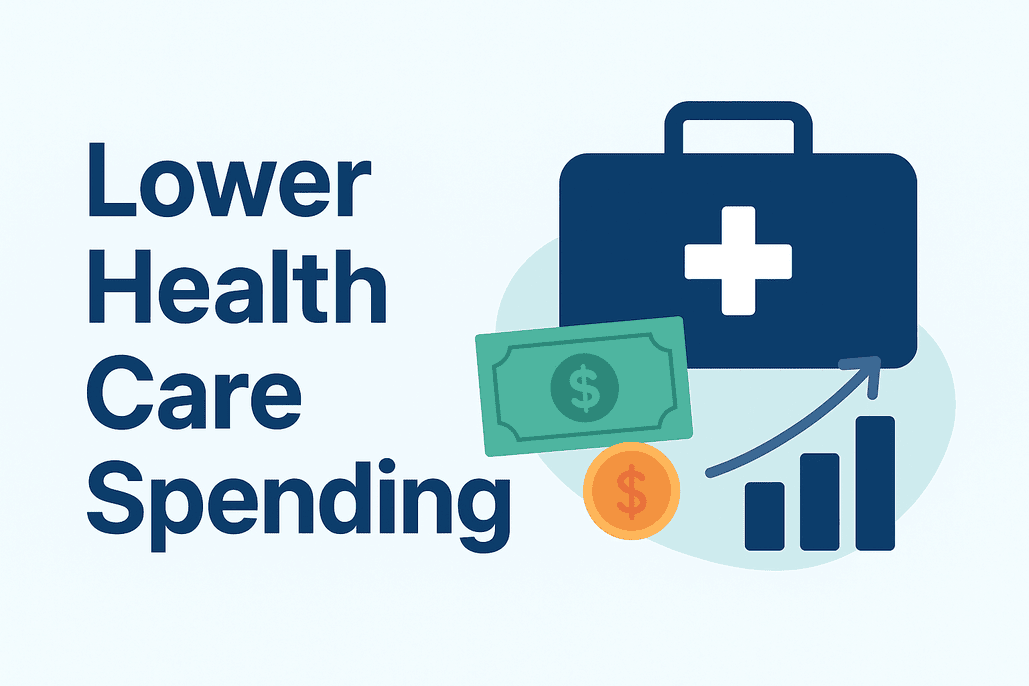Health care costs are rising every year, and many employers and insurance companies are looking for ways to lower health care spending without cutting quality. High costs don’t just affect budgets—they can make it harder for employees to get the care they need. The good news is that there are practical ways to reduce costs, and technology is playing a bigger role than ever.
How Health Care Costs Add Up
Health care expenses come from many areas. Hospital stays, doctor visits, prescriptions, and administrative work all add up. Sometimes, costs are higher than they need to be because of inefficiencies, unnecessary procedures, or poor management of chronic conditions. Even small savings in each of these areas can make a big difference over time.
Using Technology to Reduce Health Costs
One of the biggest ways companies can lower health care spending is by using technology. From apps that track employee health to software that helps manage claims and appointments, technology helps reduce mistakes, save time, and focus resources where they are most needed.
For example, AI tools can analyze health data to identify employees at risk of certain conditions. This allows employers and insurance companies to intervene early, which often avoids expensive treatments later. Telemedicine also helps employees get care quickly without costly emergency visits or time away from work.
Preventive Care Matters
Preventive care is another key part of lowering health care spending. Encouraging employees to have regular check-ups, screenings, and vaccinations can prevent serious illnesses that are much more expensive to treat. Wellness programs that support healthy habits like exercise, nutrition, and stress management also play a role.
These programs may seem small, but over time they reduce doctor visits, hospital stays, and medication costs. Combining preventive care with technology makes it easier to track progress and measure results, which helps optimize health spending for the whole organization.
Reducing Administrative Costs
A surprising amount of health care spending goes to administrative tasks. Paperwork, billing errors, and manual claim processing take time and money. Technology can automate many of these tasks, making the system more efficient and less prone to mistakes.
By reducing administrative costs, companies can save money without affecting the quality of care employees receive. Tools that integrate scheduling, claims processing, and reporting make it easier to see where money is going and how to lower unnecessary expenses.
How Employers Can Take Action
Employers have several options to lower health care spending:
- Offer wellness programs: Support healthy habits among employees.
- Encourage preventive care: Regular check-ups can catch problems early.
- Use technology: Apps, AI, and telemedicine reduce errors and unnecessary costs.
- Analyze data: Look at trends in claims and costs to spot areas to improve.
- Partner with providers: Work with health care providers who focus on efficiency and quality.
Even small changes can have a big effect over time. For example, using telemedicine for routine care can save employees time and reduce unnecessary office visits, while AI-driven programs can help predict health risks before they become costly problems.
The Role of AI in Lowering Costs
AI is one of the most talked-about tools for reducing health care spending. It can identify trends and patterns in large sets of health data that would be impossible for humans to see. AI can help predict which employees may develop chronic conditions, track which interventions are working, and help insurance companies price plans more effectively.
When AI is used alongside human judgment, it helps organizations make smarter decisions that both save money and improve employee health.
Measuring Success
To know if your strategies are working, it’s important to track metrics like:
- Total health care spending per employee
- Hospital visits and emergency room usage
- Participation in wellness programs
- Employee satisfaction and health outcomes
Tracking these metrics over time lets you see where you are saving money and where more work is needed. Technology makes it easier to gather and analyze this data, so your decisions are based on facts rather than guesswork.
Bringing It All Together
Lowering health care spending doesn’t mean cutting care. It means using smart strategies, preventive programs, and technology to make the system more efficient. By focusing on early intervention, wellness programs, and AI-driven tools, employers and insurance companies can save money and help employees stay healthy.
The key is to take a holistic approach. Combining preventive care with tools that track health, manage claims, and analyze data helps optimize health spending across the board. Every dollar saved in unnecessary costs can be redirected to improve employee care and satisfaction.
Conclusion
Health care costs aren’t going down, but organizations don’t have to just accept rising expenses. Technology, preventive care, and careful analysis make it possible to lower health care spending while keeping employees healthy and happy. Companies that take these steps today are not only saving money—they’re creating a system that works better for everyone.



%402x%20(2).svg)